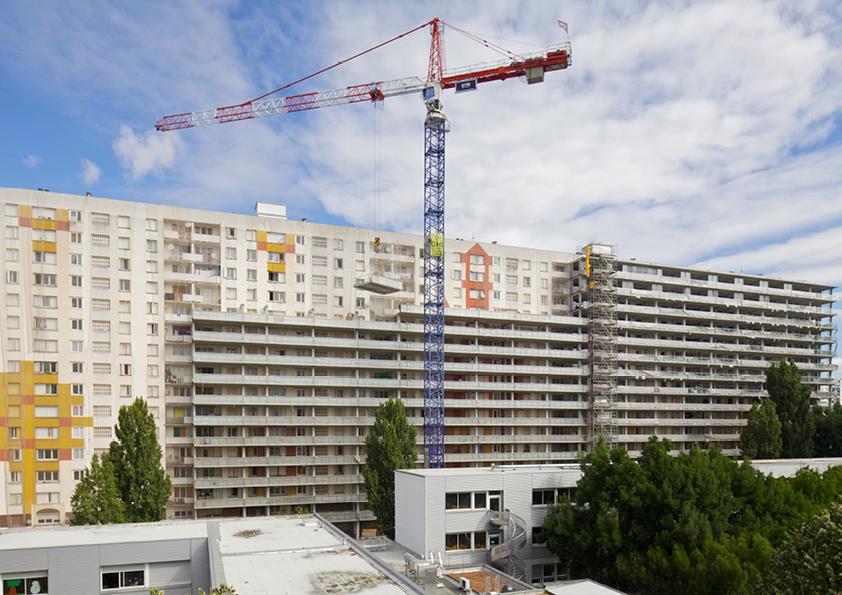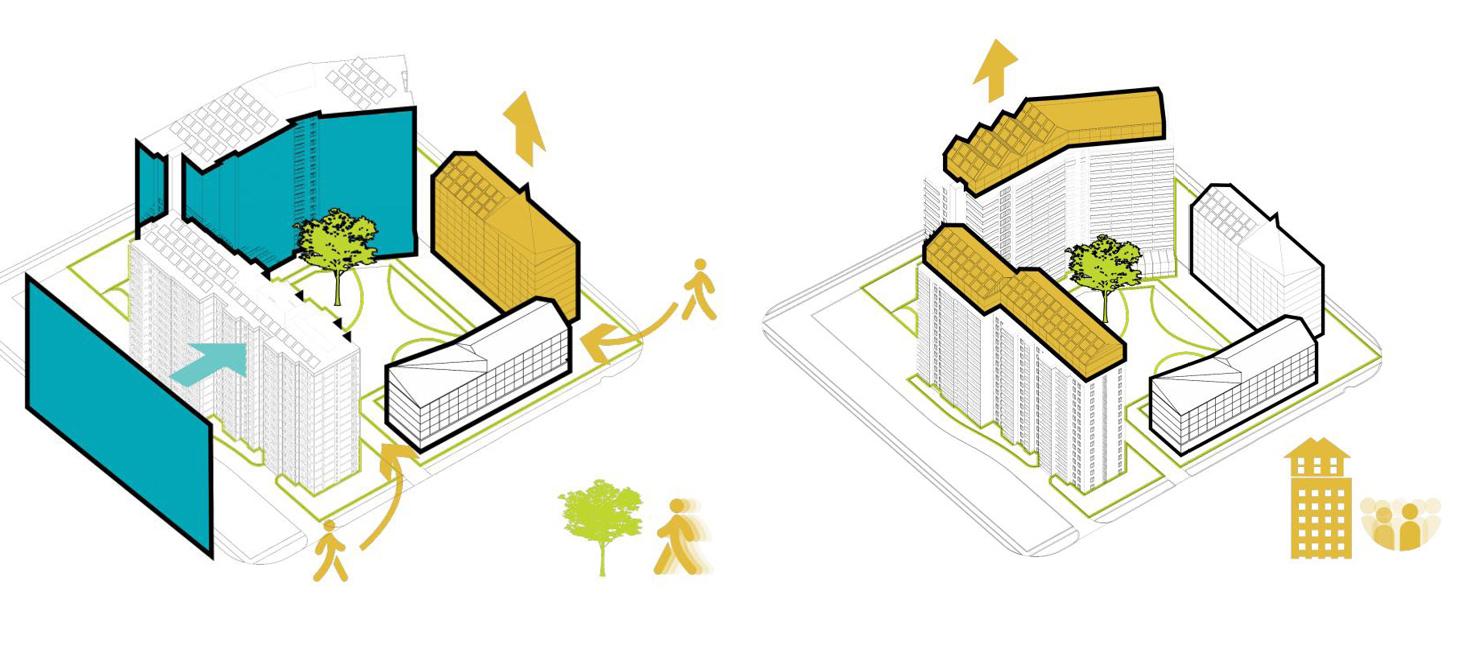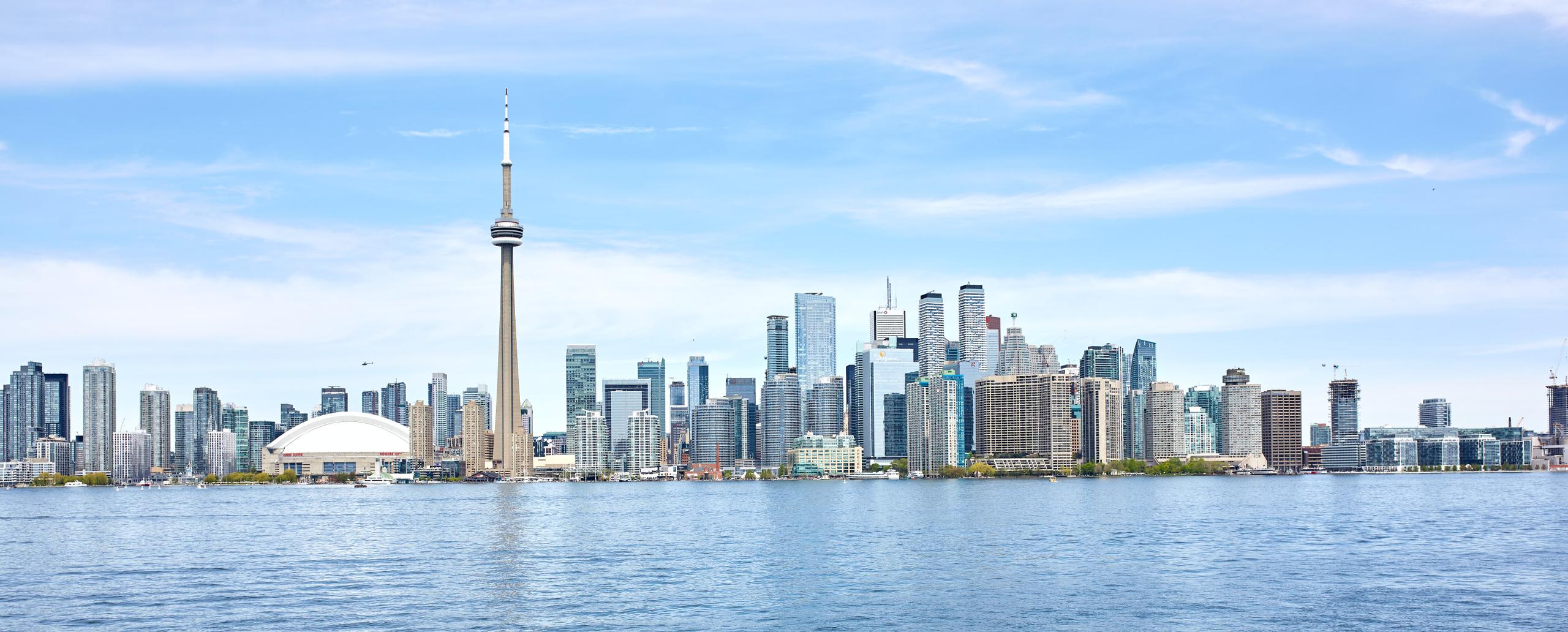We need to talk about the elephant in the room: our existing building stock.
Canada has joined over 120 countries in committing to be net-zero emissions by 2050. This goal will require support and engagement from all levels of government and all members of the construction industry.
It is estimated that 80% of the buildings that will be in use in 2050 already exist. Put another way, perhaps 80% of the potential to create net-zero buildings already exists?
Rather than looking at these existing buildings as today’s problem, let’s explore how they can be tomorrow’s solution and mobilize as an industry to make it happen.
Why not just demolish these buildings in favour of new construction?
As we become more aware and conscientious about the embodied carbon in construction, it is becoming more evident that retrofitting and adaptive reuse is the more sustainable option. Architects in the UK are asking the government to review the way renovations and new construction are taxed, to make it cheaper to refurbish than to rebuild.

The cycle of build-demolish-build is not sustainable, and the industry needs to face the fact that we are now in a build-and-retrofit era. Buildings exist in varying stages of their life cycle - they need ongoing maintenance, and they need to be looked at more holistically as an opportunity to mitigate climate risk while improving health and safety conditions for end users.
Is there a better solution?
Deep energy retrofits are the answer. Conventional retrofits focus on isolated system upgrades (i.e. HVAC, lighting and elevator) but the drawback is that, while they do improve the building, they lock in carbon for another life cycle. Deep energy retrofits achieve much greater energy efficiency by taking a whole-building approach, addressing many systems at once. This will take effort from across our industry to realize. The opportunity to retrofit a building’s mechanical systems and envelope only comes around roughly every 30 years. What a great opportunity it is to improve the thermal performance, reduce carbon emissions, reduce maintenance costs and improve the quality of life for thousands of families.

Image copyright Philippe Ruault. This transformation of 530 dwellings at Grand Parc Bordeaux (Lacaton & Vassal + Frédéric Druot + Christophe Hutin architecture) is a great example of how we can renovate rather than demolish our existing buildings. The project won the Mies Van Der Rohe Award in 2019.
Hey architects: create the vision
Architecture is inherently optimistic about the future. Architects advocate for improved built environments while respecting the legacy of our predecessors. As architects we engage with politicians, investors, engineers, planners, builders, trades, manufacturers and residents. Being at the nexus of these players, we have an opportunity to establish how the physical environment can engage with the social issues of our time.
Hey developers: create the market
There are over a thousand towers in Toronto in need of deep energy retrofits. At the current pace it will take centuries to bring these building to net zero. Challenging the construction industry to develop and create off-the-shelf solutions for retrofits will not happen until there is enough demand from a critical mass.
Precedents do exist that demonstrate both creative vision and an understanding of market transformation.
In the Netherlands, the “Energiesprong" retrofit program was established to bring homes to net zero energy – meaning, retrofitted homes generate the total amount of energy required to operate. The program aims to turn individual retrofit opportunities into a group of retrofit projects to generate large-scale investment by suppliers and contractors to provide equipment, products and services to meet the retrofit demand at an affordable cost. Italy, France and Germany all followed suit and developed their own Energiesprong project delivery model.

New York is doing something similar and initiated "The Pledge", modelled after Energiesprong. From their website: "The Pledge is a formal call to action to help motivate manufacturers to make low-cost, high-performance building solutions more affordable and accessible. The Pledge enables building owners to use their collective buying power, at no risk to themselves, to compel manufacturers to introduce new retrofit solutions into the market...By signing, building owners are pledging to install cost-effective carbon neutral retrofit solutions when they become available."
Hey Councillors: upgrade zoning for quality density
Most tower-in-the-park sites are separated from neighbourhoods by large setbacks from streets and infrastructure. There is potential for more density on these sites, but because these buildings are outside of the policy areas that are earmarked for density and growth, this means that in most circumstances adding density requires a lengthy and costly process of Zoning By-Law Amendment or Official Plan Amendment.
This is an important consideration because adding density creates opportunities for improving the environment of the existing community and the revenue created by the additional density can help offset the cost of the existing building’s retrofit. Developers and owners need the City to relax the planning policies that restrict density on these sites and shorten the timeline for Municipal Approvals to incentivize additional density in exchange for healthier buildings and stronger communities.

BDP Quadrangle's proposal for Kehilla and EllisDon's Affordable Modular Housing Competition explored intensification and revitalization of tower-in-the-park sites.
Hey governments: expand and streamline funding and incentives
Renovictions are a very real problem. An overwhelming majority of apartment buildings home to low-income families are in urgent need of improvements. But the cost of these necessary deep retrofits should not be passed onto tenants. Federal and Provincial funding and initiatives for deep retrofits do exist for rental and non-profit buildings. However, navigating the funding applications from various sources with differing eligibility, requirements and timelines is daunting and may even deter owners and property managers from accessing these funds.

Let’s not forget the glass towers that adorn our skylines. Condos are not able to access this government funding, and the condo corporations that manage these buildings are not permitted to incur debt. Condominium buildings are rarely professionally managed and as such their boards are made up of non-professional volunteers. We need to develop creative ways to support condo corporations, in planning, developing, and planning for deep retrofits of these buildings to bring them up to current standards.

Home Sweet Home
For the average Canadian, housing is the single most expensive item they will pay for in their lifetime. Everyone needs a safe and healthy place to call home. This is an opportunity to improve the lives of thousands of Canadians while building a zero-carbon construction economy!! The construction industry has the knowledge and the tools to be a real contributor to our low carbon economy. Deep energy retrofits that strive for net zero are the way forward. Let’s talk about how we can mobilize as an industry and move this agenda forward in a real way.